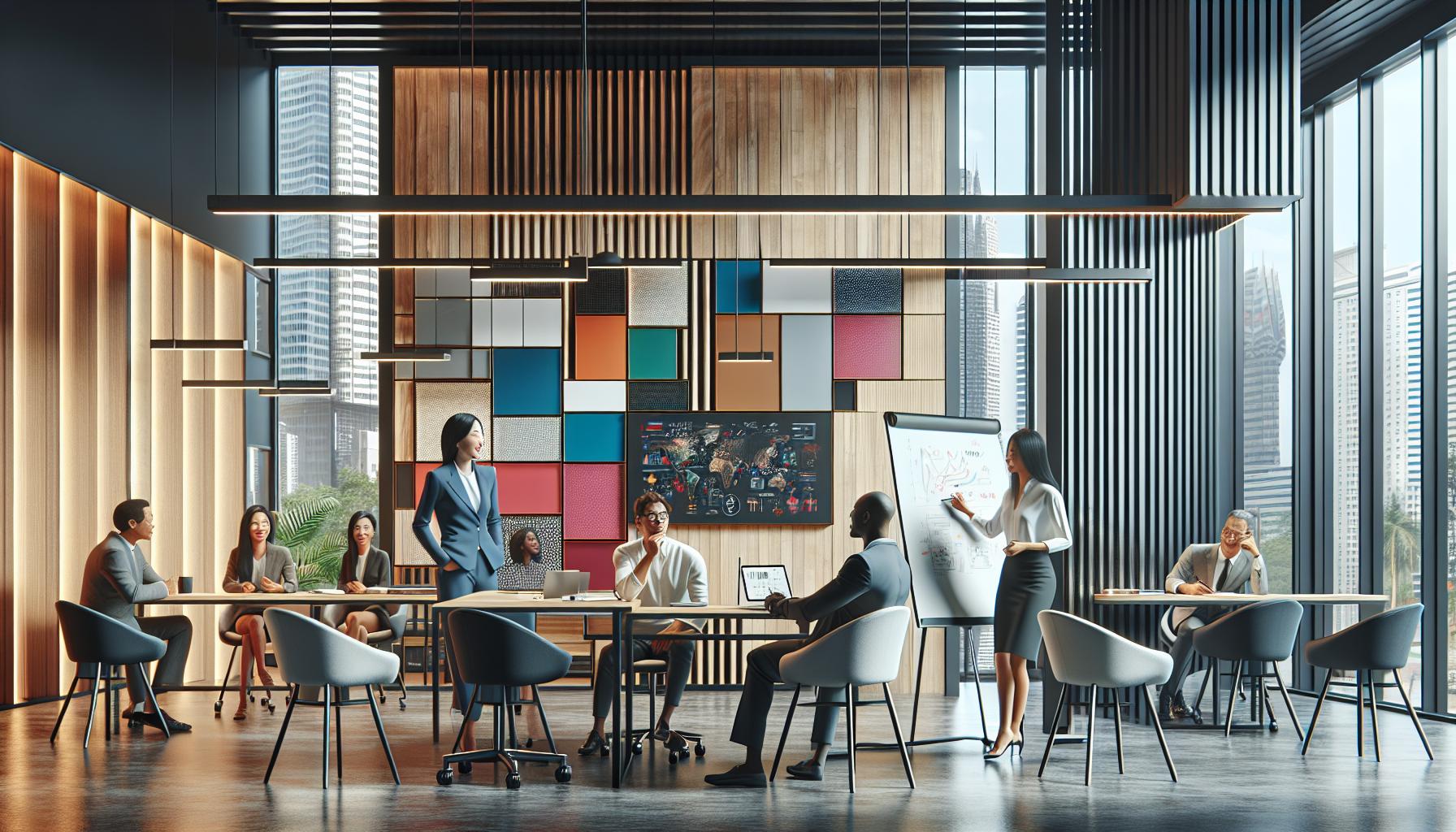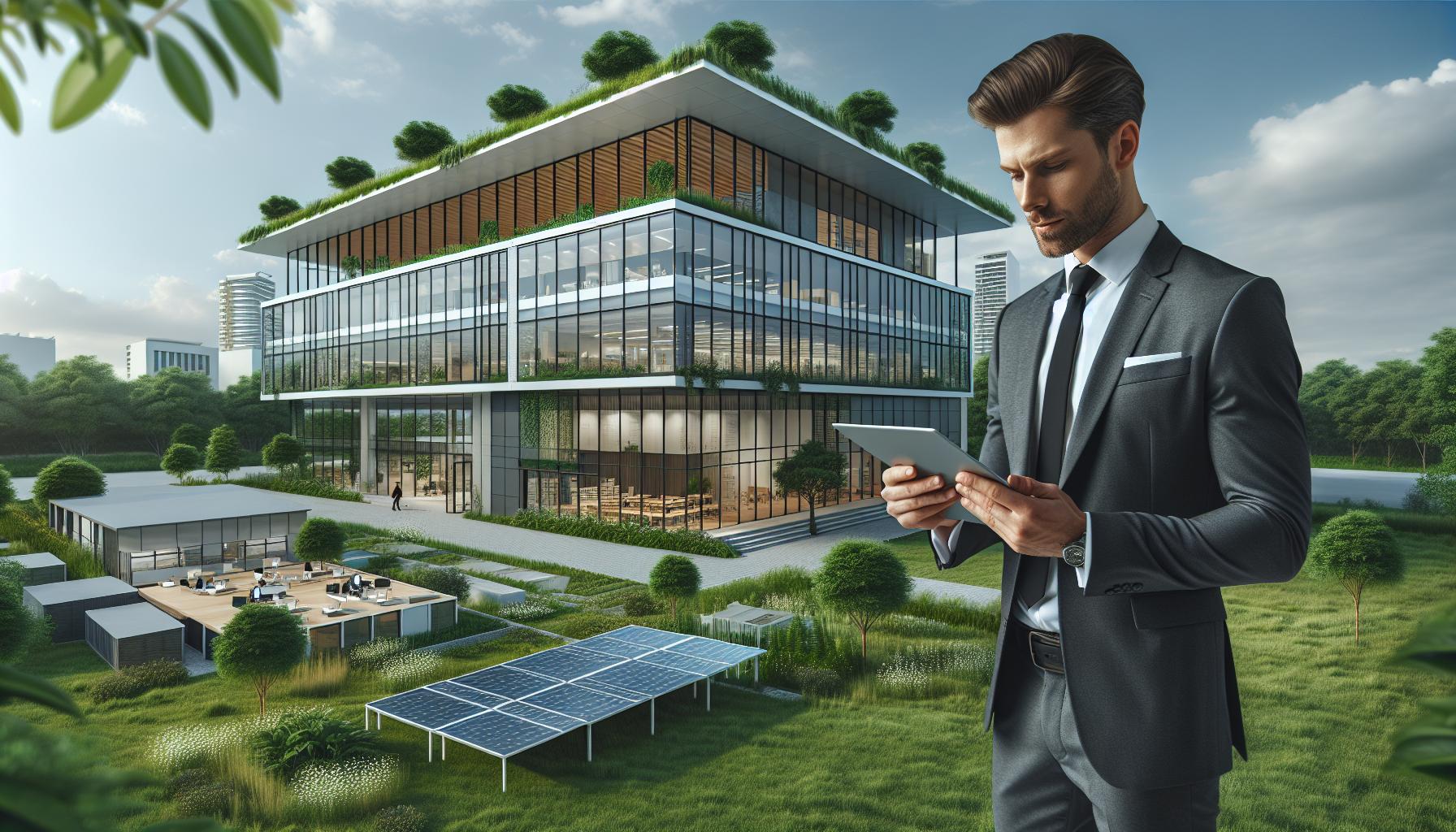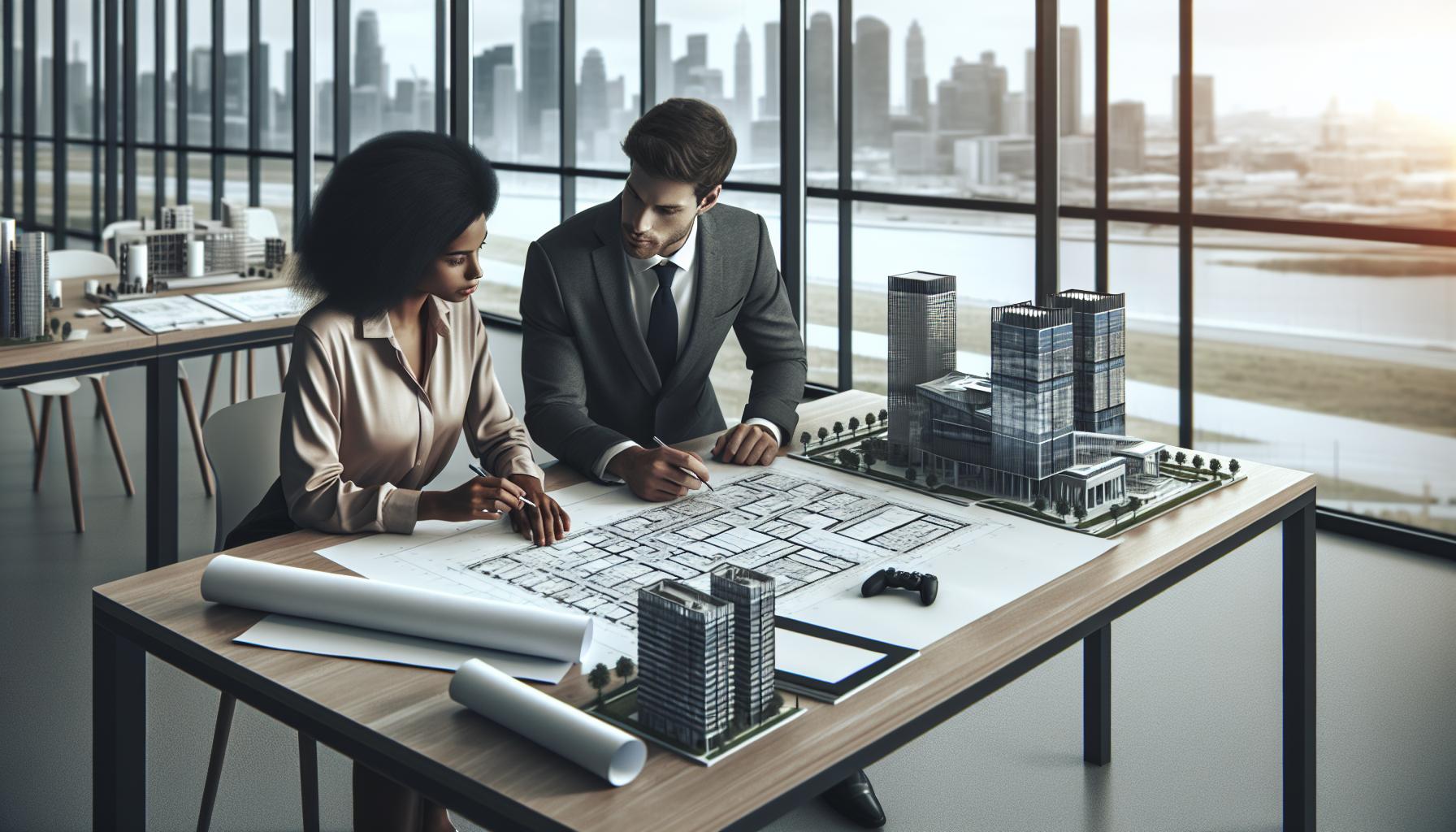In a world where first impressions count, commercial architectural design plays a starring role. It’s not just about creating a building; it’s about crafting an experience that draws people in, like a moth to a flame—or a coffee lover to a cozy café. From sleek office towers to inviting retail spaces, the right design can transform a dull block into a bustling hub of activity.
But let’s face it: not all designs are created equal. Some buildings inspire awe, while others leave you wondering if the architect had a little too much caffeine. The key lies in blending functionality with creativity, ensuring that every square foot serves a purpose while still looking fabulous. So buckle up as we explore the fascinating world of commercial architectural design, where innovation meets practicality, and every corner tells a story.
Commercial Architectural Design
Commercial architectural design focuses on creating functional and aesthetically pleasing spaces for businesses and organizations. Emphasis rests on how design influences both the user experience and the brand identity. Engaging layouts attract customers, boost employee morale, and enhance operational efficiency.
Spatial arrangement plays a crucial role in this branch of design. Strategic placement of elements, such as entrances, workspaces, and communal areas, fosters interaction and collaboration. Flexibility in design meets the changing needs of the business, allowing for easy adaptation over time.
Material selection significantly impacts sustainability and durability. Architects utilize energy-efficient materials to reduce operational costs and environmental footprints. Innovative technologies, such as automated lighting and HVAC systems, contribute to eco-friendly designs.
Incorporating local culture and aesthetics enriches the design’s connection to the community. Reflective elements and colors create a sense of belonging while promoting brand recognition. Architectural features, such as green walls or outdoor spaces, further integrate nature into commercial environments.
Overall, commercial architectural design serves as a bridge between functionality and creativity. Importance lies in crafting spaces that resonate with users while fulfilling practical needs. Mastering this balance results in designs that not only function well but inspire and uplift.
Key Principles of Commercial Architectural Design

Commercial architectural design hinges on several core principles that mold effective spaces. Understanding these principles enhances both functionality and visual appeal.
Functionality and Use
Functionality remains central in commercial architectural design. Spaces must support the intended activities efficiently. Designers assess the flow of movement, ensuring easy access to areas like entrances and service points. Incorporating modular designs maximizes versatility and adapts to varying business needs. Strategically placed furniture facilitates interaction among users, enhancing collaboration. Each space is tailored to meet the specific operational requirements of businesses. Practicality drives design choices, resulting in environments that improve productivity.
Aesthetics and Branding
Aesthetics play a pivotal role in shaping brand identity within commercial spaces. Designing with a strong visual impact attracts customers and fosters engagement. Color schemes, materials, and architectural styles reflect a brand’s ethos. Visual elements create a cohesive experience that leaves lasting impressions on visitors. Integrating local culture adds a unique layer to the design, connecting businesses to their communities. Effective branding through design is essential for distinguishing a business from competitors. Overall, aesthetics contribute significantly to customer perceptions and emotional connections with a brand.
Trends in Commercial Architectural Design

Emerging trends significantly shape commercial architectural design, creating spaces that meet modern needs and expectations.
Sustainability and Eco-Friendly Practices
Sustainable practices gain traction in commercial architectural design. Designers prioritize materials that enhance energy efficiency while minimizing environmental impact. Incorporating green roofs aids in reducing energy costs and promotes biodiversity. Renewable resources like bamboo and recycled steel become popular choices for construction. Additionally, achieving LEED certification encourages businesses to adopt eco-friendly measures, which boosts their reputation and attracts environmentally conscious consumers.
Technology Integration
Technology integration transforms how architect firms approach design. Smart buildings incorporate IoT devices for real-time monitoring of energy use and occupancy levels. Advanced software allows for precise modeling and visualization, enabling clients to experience designs before completion. Virtual reality and augmented reality tools enhance client engagement and facilitate decision-making. Furthermore, automated systems improve operational efficiency by optimizing lighting and climate control based on occupancy patterns.
Challenges in Commercial Architectural Design

Commercial architectural design faces several challenges that can impact the outcome of projects. Two significant areas include budget considerations and regulatory compliance.
Budget Considerations
Budget constraints significantly influence design decisions. Designers often must balance high-quality materials and innovative features with financial limitations. Cost overruns may result from unforeseen circumstances, impacting project timelines. Strategic planning helps mitigate these risks, ensuring budgets align with client expectations. Prioritizing essential expenses allows for smarter allocation of resources. Often, workarounds or compromises become necessary to achieve functional yet cost-effective solutions.
Regulatory and Compliance Issues
Navigating regulatory frameworks presents obstacles for architectural designers. Each region imposes unique building codes, zoning regulations, and safety standards. Designers must remain informed about these requirements to ensure adherence throughout the process. Failure to comply can lead to delays, fines, or even project cessation. Engaging with local authorities early fosters a smoother collaboration and hasty approvals. Additionally, understanding environmental regulations impacts material choices and design sustainability. Balancing creativity with compliance ensures successful project delivery.
Case Studies of Successful Commercial Architectural Designs
Several case studies exemplify the impact of effective commercial architectural design. One remarkable example, the Apple Park in Cupertino, California, showcases a circular design prioritizing sustainability. Green roofs and solar panels contribute to energy efficiency, while the layout encourages collaboration among employees. This innovative approach enhances user experience and fosters a strong brand identity.
Another noteworthy project is the Bullitt Center in Seattle, recognized for its environmental considerations. Dubbed the greenest commercial building in the world, it features rainwater harvesting and composting toilets. Its design incorporates large windows optimizing natural light, promoting productivity and well-being among occupants. The Bullitt Center demonstrates that sustainability can drive business growth.
The Bosco Verticale in Milan presents a striking example of integrating nature into urban spaces. These residential towers covered with trees and plants improve air quality while providing a unique aesthetic. This design strategy enhances the surrounding community’s livability and reflects growing trends in biophilic architecture.
Studio Gang’s Aqua Tower in Chicago illustrates the use of innovative forms and materials. This mixed-use structure incorporates a wave-like façade, providing visual interest while reducing energy consumption. Its thoughtful design creates a vibrant public space, benefiting both residents and visitors.
Lastly, the One Central Park in Sydney stands out for its integration of art and nature. Vertical gardens add visual appeal and promote biodiversity. The overall design facilitates community engagement, linking residents to the environment in their urban setting.
These case studies demonstrate how successful commercial architectural designs create functional, sustainable, and aesthetically pleasing spaces that resonate with users. By blending innovative materials and techniques, these projects highlight the significant role architecture plays in enhancing brand identity while serving practical needs.
Commercial architectural design is vital for shaping spaces that resonate with users and reflect a brand’s identity. It merges creativity with functionality to create environments that foster engagement and collaboration. By prioritizing sustainability and innovative technologies, designers can meet modern demands while minimizing environmental impact.
As trends evolve, businesses must adapt their spaces to enhance user experience and operational efficiency. Successful designs not only attract customers but also promote a sense of community and belonging. Embracing these principles ensures that commercial spaces remain relevant and impactful in an ever-changing landscape. The future of commercial architecture lies in its ability to inspire and uplift while addressing practical needs.



